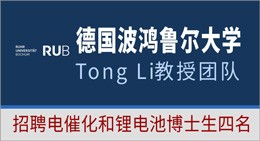当前位置:
X-MOL 学术
›
Environ. Sci. Technol.
›
论文详情
Our official English website, www.x-mol.net, welcomes your
feedback! (Note: you will need to create a separate account there.)
o-Semiquinone Radical and o-Benzoquinone Selectively Degrade Aniline Contaminants in the Periodate-Mediated Advanced Oxidation Process
Environmental Science & Technology ( IF 10.8 ) Pub Date : 2024-01-18 , DOI: 10.1021/acs.est.3c08179
Yangjian Zhou 1 , Yu Lei 2 , Qingqing Kong 1 , Fangyuan Cheng 3 , Mengge Fan 1 , Yanchun Deng 1 , Qing Zhao 1 , Junlang Qiu 1 , Peng Wang 1 , Xin Yang 1
Environmental Science & Technology ( IF 10.8 ) Pub Date : 2024-01-18 , DOI: 10.1021/acs.est.3c08179
Yangjian Zhou 1 , Yu Lei 2 , Qingqing Kong 1 , Fangyuan Cheng 3 , Mengge Fan 1 , Yanchun Deng 1 , Qing Zhao 1 , Junlang Qiu 1 , Peng Wang 1 , Xin Yang 1
Affiliation

|
Advanced oxidation processes (AOPs) often employ strong oxidizing inorganic radicals (e.g., hydroxyl and sulfate radicals) to oxidize contaminants in water treatment. However, the water matrix could scavenge the strong oxidizing radicals, significantly deteriorating the treatment efficiency. Here, we report a periodate/catechol process in which reactive quinone species (RQS) including the o-semiquinone radical (o-SQ•–) and o-benzoquinone (o-Q) were dominant to effectively degrade anilines within 60 s. The second-order reaction rate constants of o-SQ•– and o-Q with aniline were determined to be 1.0 × 108 and 4.0 × 103 M–1 s–1, respectively, at pH 7.0, which accounted for 21% and 79% of the degradation of aniline with a periodate-to-catechol molar ratio of 1:1. The major byproducts were generated via addition or polymerization. The RQS-based process exhibited excellent anti-interference performance in the degradation of aniline-containing contaminants in real water samples in the presence of diverse inorganic ions and organics. Subsequently, we extended the RQS-based process by employing tea extract and dissolved organic matter as catechol replacements as well as metal ions [e.g., Fe(III) or Cu(II)] as periodate replacements, which also exhibited good performance in aniline degradation. This study provides a novel strategy to develop RQS-based AOPs for the highly selective degradation of aniline-containing emerging contaminants.
中文翻译:

邻半醌自由基和邻苯醌在高碘酸盐介导的高级氧化过程中选择性降解苯胺污染物
高级氧化工艺(AOP)通常采用强氧化性无机自由基(例如羟基和硫酸根)来氧化水处理中的污染物。然而,水基质可以清除强氧化自由基,显着降低处理效率。在这里,我们报告了高碘酸盐/儿茶酚过程,其中包括邻半醌自由基( o -SQ •– )和邻苯醌( o -Q)在内的活性醌物种(RQS)占主导地位,可在60秒内有效降解苯胺。测定pH 7.0时o -SQ •–和o -Q与苯胺的二级反应速率常数分别为1.0 × 10 8和4.0 × 10 3 M –1 s –1 ,占21%高碘酸盐与儿茶酚摩尔比为 1:1 时,苯胺降解率达到 79%。主要副产物是通过加成或聚合产生的。基于RQS的工艺在存在多种无机离子和有机物的情况下降解实际水样中的含苯胺污染物时表现出优异的抗干扰性能。随后,我们扩展了基于RQS的工艺,使用茶提取物和溶解的有机物作为儿茶酚替代品以及金属离子[例如Fe(III)或Cu(II)]作为高碘酸盐替代品,在苯胺降解方面也表现出良好的性能。这项研究提供了一种开发基于 RQS 的 AOP 的新策略,用于高选择性降解含苯胺的新兴污染物。
更新日期:2024-01-18
中文翻译:

邻半醌自由基和邻苯醌在高碘酸盐介导的高级氧化过程中选择性降解苯胺污染物
高级氧化工艺(AOP)通常采用强氧化性无机自由基(例如羟基和硫酸根)来氧化水处理中的污染物。然而,水基质可以清除强氧化自由基,显着降低处理效率。在这里,我们报告了高碘酸盐/儿茶酚过程,其中包括邻半醌自由基( o -SQ •– )和邻苯醌( o -Q)在内的活性醌物种(RQS)占主导地位,可在60秒内有效降解苯胺。测定pH 7.0时o -SQ •–和o -Q与苯胺的二级反应速率常数分别为1.0 × 10 8和4.0 × 10 3 M –1 s –1 ,占21%高碘酸盐与儿茶酚摩尔比为 1:1 时,苯胺降解率达到 79%。主要副产物是通过加成或聚合产生的。基于RQS的工艺在存在多种无机离子和有机物的情况下降解实际水样中的含苯胺污染物时表现出优异的抗干扰性能。随后,我们扩展了基于RQS的工艺,使用茶提取物和溶解的有机物作为儿茶酚替代品以及金属离子[例如Fe(III)或Cu(II)]作为高碘酸盐替代品,在苯胺降解方面也表现出良好的性能。这项研究提供了一种开发基于 RQS 的 AOP 的新策略,用于高选择性降解含苯胺的新兴污染物。







































 京公网安备 11010802027423号
京公网安备 11010802027423号